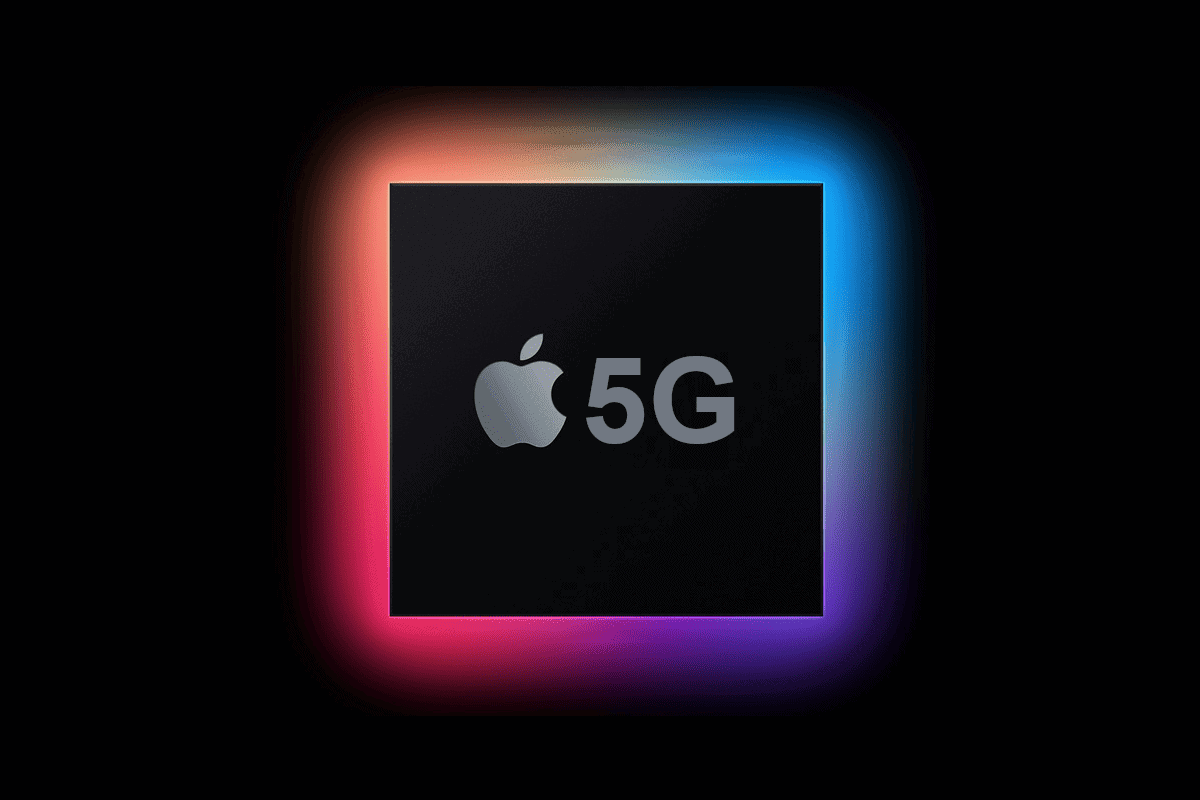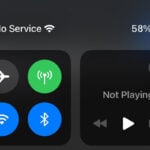Apple’s long-awaited in-house 5G modem is set to make its debut in 2025. The tech giant plans to introduce this new component in the fourth-generation iPhone SE, marking a significant shift in Apple’s mobile technology strategy. Apple’s custom 5G modem is expected to appear in the iPhone SE 4, iPhone 17 Air, and low-end iPads in 2025, following more than five years of development.
This move signals Apple’s ongoing efforts to reduce reliance on external suppliers and gain more control over its device components. The iPhone SE serves as an ideal testbed for the new technology, allowing Apple to refine the modem’s performance before implementing it in higher-end devices.
While the initial version of Apple’s 5G modem may not match the capabilities of current Qualcomm offerings, the company aims to make significant advancements by 2027. This timeline suggests a gradual rollout of the technology across Apple’s product lineup, with continuous improvements planned for future iterations.
Apple’s 5G Modem: What We Know
Apple has been working on its own 5G modem for a while. This is a big deal for Apple and the tech world. It means iPhones may soon use Apple’s own modem instead of Qualcomm’s.
Why is Apple Making Its Own Modem?
Apple likely wants more control over its devices. Using its own modem could give Apple several advantages.
- Improved Performance: Apple could design the modem to work perfectly with its other chips. This could lead to faster speeds and better battery life.
- Cost Savings: Apple could save money by not buying modems from Qualcomm.
- More Features: Apple could add special features to its modem that are not available in Qualcomm’s.
When Will Apple’s 5G Modem Be Released?
Apple has not given an official release date. But, experts think the modem could be in iPhones as early as 2025. Some think it might be even later.
Challenges for Apple
Making a 5G modem is not easy. Apple will face some challenges.
- Meeting Performance Standards: Apple’s modem must be as good as or better than Qualcomm’s.
- Manufacturing: Apple needs to find a way to make enough modems for all its iPhones.
- Testing: The modem needs a lot of testing to make sure it works well in different situations.
What This Means for Consumers
If Apple’s modem is successful, it could mean better iPhones. We might see:
- Faster internet speeds.
- Longer battery life.
- New features.
What About Qualcomm?
Qualcomm is the biggest maker of 5G modems. Apple is a big customer for Qualcomm. If Apple starts using its own modems, it could hurt Qualcomm’s business.
The Future of 5G
Apple’s move shows how important 5G is. 5G is the next generation of wireless technology. It is much faster than 4G. 5G is important for many new technologies, like self-driving cars and virtual reality.
Apple’s A-Series Chips
Apple is known for its A-series chips. These chips power iPhones and iPads. They are some of the most powerful mobile chips available.
Why are A-Series Chips So Powerful?
Apple designs its A-series chips to work perfectly with iOS. This allows for better performance and efficiency.
A-Series Chip Features
A-series chips have many features that make them stand out.
| Feature | Benefit |
|---|---|
| CPU | Fast processing speeds |
| GPU | Great graphics performance |
| Neural Engine | Powers AI features |
| ISP | Improves image quality |
Key Takeaways
- Apple’s custom 5G modem will debut in the iPhone SE 4 and other devices in 2025
- The company plans to expand its use to higher-end iPhones and iPads in subsequent years
- Apple aims to achieve significant improvements in modem technology by 2027
Evolution of Apple’s Modem Technology
Apple is reportedly getting closer to ditching Qualcomm and using its own 5G modem in future iPhones. This strategic move could give Apple greater control over its devices, potentially leading to improved performance, cost savings, and the introduction of innovative features. While the exact release date remains uncertain, industry experts speculate that Apple’s 5G modem could debut as early as 2025.
However, Apple faces significant challenges in ensuring its modem meets performance standards, managing manufacturing logistics, and conducting thorough testing. If successful, this transition could result in iPhones with faster internet speeds, extended battery life, and groundbreaking new features, while potentially impacting Qualcomm’s market share.
Apple’s journey to develop its own 5G modem has been marked by strategic decisions and technological advancements. The company’s efforts aim to reduce reliance on external suppliers and enhance control over its device ecosystem.
Transition From Qualcomm to In-House Solutions
Apple’s relationship with Qualcomm has been complex. The two companies engaged in legal battles over patent licensing and royalty payments. This conflict pushed Apple to seek alternatives.
In 2019, Apple acquired Intel’s smartphone modem business for $1 billion. This move provided Apple with patents and expertise to accelerate its modem development.
Apple continued using Qualcomm modems in iPhones while working on its in-house solution. The companies reached a settlement, which included a multi-year chip supply agreement.
Advancements Leading to the Apple 5G Modem
Apple’s progress in modem technology has been steady but challenging. The company faced technical hurdles in developing a competitive 5G modem.
Reports suggest Apple’s first in-house modem may debut in 2025. Analyst Ming-Chi Kuo predicts it could appear in the fourth-generation iPhone SE or the iPhone 17 series.
The development process involves:
- Creating efficient chip designs
- Optimizing power consumption
- Ensuring compatibility with global cellular networks
Impact of Apple’s Modem Development on Market Dynamics
Apple’s entry into modem production could reshape the smartphone component market. The move may reduce Qualcomm’s dominance in the high-end modem space.
Potential impacts include:
- Increased competition in the modem market
- Reduced costs for Apple in the long term
- Greater integration between Apple’s hardware and software
However, challenges remain. Apple must match or exceed Qualcomm’s modem performance to maintain iPhone quality standards.
The success of Apple’s modem could influence other smartphone manufacturers to consider developing their own chips.
Frequently Asked Questions
Apple’s development of its own 5G modem for iPhones has sparked interest and questions among tech enthusiasts and consumers. This section addresses key inquiries about the expected launch, potential benefits, and challenges.
When is Apple expected to launch iPhones with its proprietary 5G modems?
Apple’s in-house 5G modem is anticipated to debut in 2024. The fourth-generation iPhone SE is likely to be the first device featuring this technology.
Other devices expected to incorporate Apple’s 5G modem include the iPhone 17 Air and low-end iPads. These products are also slated for release in 2024.
Will future iPhones exclusively feature Apple’s custom 5G modems?
A gradual transition to Apple’s custom 5G modems is expected. The company will likely continue using Qualcomm modems in some models initially.
Apple may adopt a phased approach, introducing its modem in lower-end devices before expanding to flagship iPhones. This strategy allows for real-world testing and refinement.
What are the benefits of Apple developing its own 5G modem for iPhones?
Creating its own 5G modem gives Apple greater control over hardware integration. This control can lead to improved performance and power efficiency.
Apple’s custom modem may allow for better optimization with iOS, potentially resulting in faster data speeds and more reliable connections. Cost savings could also be a long-term benefit for the company.
How might Apple’s own 5G modem improve iPhone performance?
Apple’s 5G modem could enable faster data transfer speeds and lower latency. These improvements would enhance experiences in areas like streaming, gaming, and augmented reality.
Battery life might also see improvements. A custom-designed modem could be more power-efficient, leading to longer usage times between charges.
What impact will Apple’s switch to its own 5G modem have on its relationship with current suppliers?
The shift to an in-house 5G modem will likely reduce Apple’s reliance on Qualcomm, its current modem supplier. This change may affect the business relationship between the two companies.
Apple might maintain some level of partnership with Qualcomm during the transition period. The extent of this ongoing relationship remains to be seen.
What are the potential challenges Apple could face in the development and deployment of its 5G modem?
Creating a 5G modem is a complex task. Apple may face technical hurdles in matching or exceeding the performance of established modem manufacturers.
Ensuring compatibility with various cellular networks worldwide could be challenging. Apple will need to conduct extensive testing to guarantee reliable connectivity across different regions and carriers.







